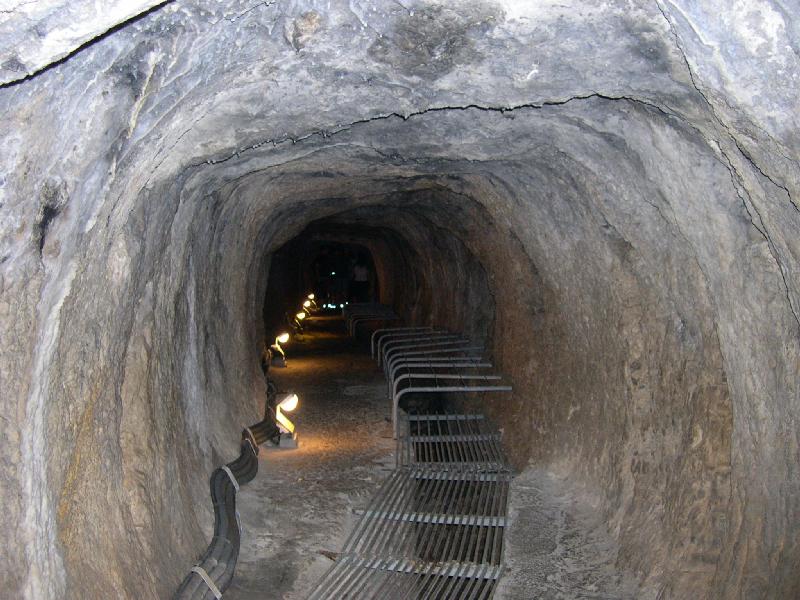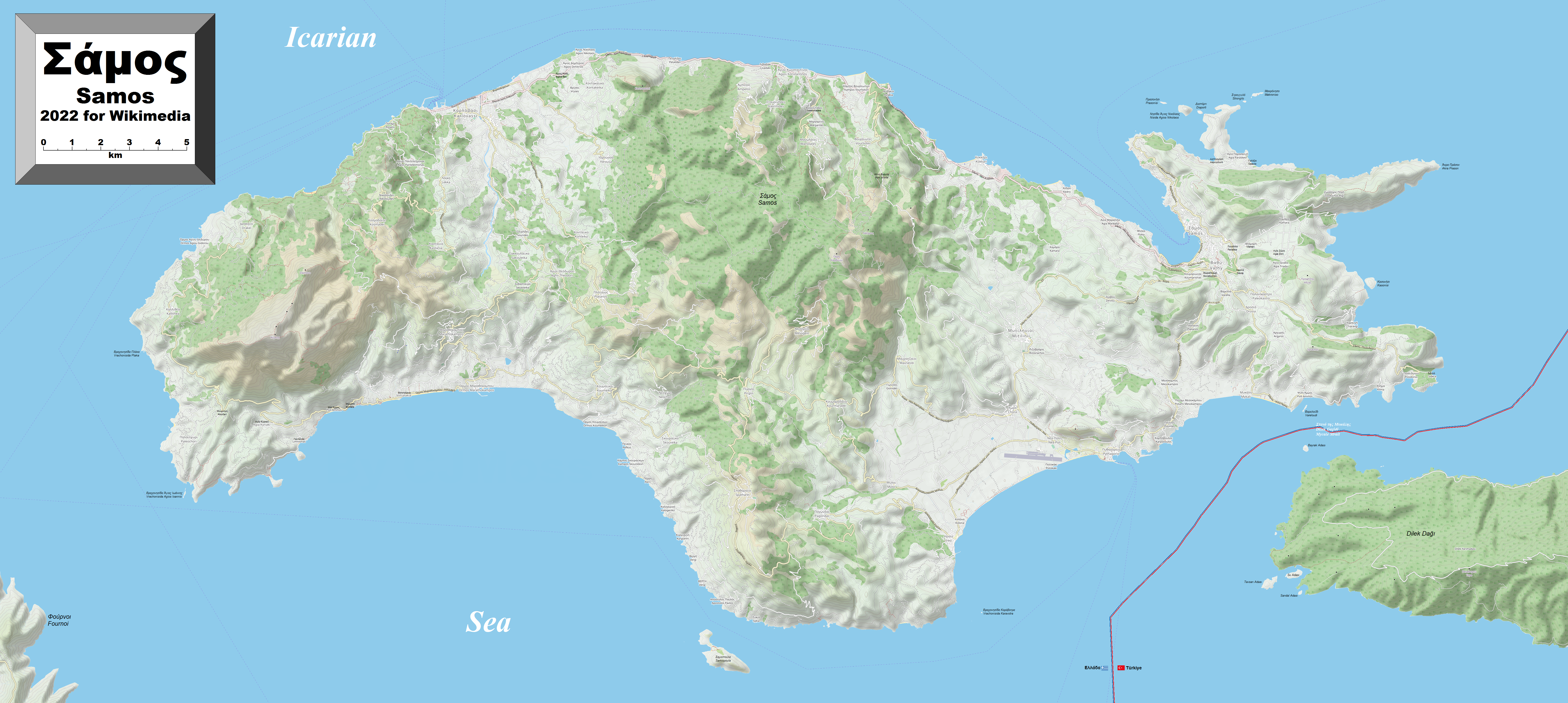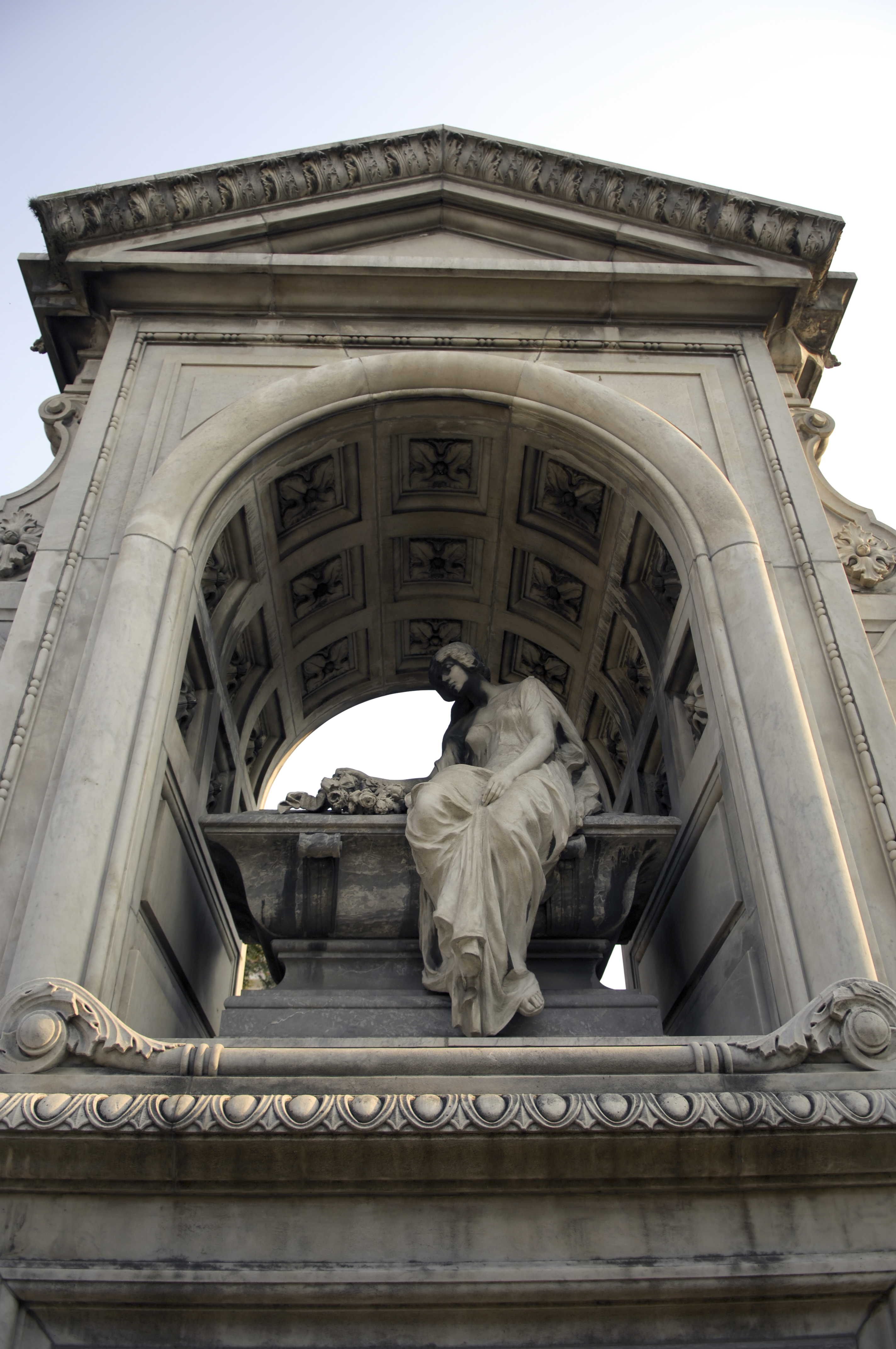|
Eupalinian Aqueduct
The Tunnel of Eupalinos or Eupalinian aqueduct () is a tunnel of length running through Mount Kastro in Samos, Greece, built in the 6th century BC to serve as an aqueduct. The tunnel is the second known tunnel in history which was excavated from both ends (, "having two openings"), and the first with a geometry-based approach in doing so. Today it is a popular tourist attraction. The tunnel is inscribed on the UNESCO World Heritage List along with the nearby Pythagoreion and Heraion of Samos, and it was designated as an International Historic Civil Engineering Landmark in 2017. Early history The Eupalinian aqueduct is described by Herodotus (''Histories'' 3.60): :I have dwelt longer upon the history of the Samians than I should otherwise have done, because they are responsible for three of the greatest building and engineering feats in the Greek world: the first is a tunnel nearly a mile long, eight feet wide and eight feet high, driven clean through the base of a hill nine ... [...More Info...] [...Related Items...] OR: [Wikipedia] [Google] [Baidu] |
Samos Island
Samos (, also ; , ) is a Greece, Greek island in the eastern Aegean Sea, south of Chios, north of Patmos and the Dodecanese archipelago, and off the coast of western Turkey, from which it is separated by the Mycale Strait. It is also a separate regional units of Greece, regional unit of the North Aegean region. In Classical antiquity, ancient times, Samos was an especially rich and powerful city-state, particularly known for its vineyards and wine production. It is home to Pythagoreion and the Heraion of Samos, a UNESCO World Heritage Site that includes the Eupalinian aqueduct, a marvel of ancient engineering. Samos is the birthplace of the Greek philosophy, Greek philosopher and mathematician Pythagoras, after whom the Pythagorean theorem is named, the philosophers Melissus of Samos and Epicurus, and the astronomer Aristarchus of Samos, the first known individual to propose that the Heliocentrism, Earth revolves around the Sun. Samian wine was well known in antiquity and is sti ... [...More Info...] [...Related Items...] OR: [Wikipedia] [Google] [Baidu] |
Geomori (Samos)
The Geomori (, 'land-sharers') were a group of wealthy aristocrats who ruled Samos as an oligarchy in the seventh or sixth century BC. They remained an important political group on Samos into the fifth century BC. History Rise and fall The main source for the rule of the Geomori is a passage in the ''Greek Questions'', written by the philosopher Plutarch, in which he attempts to explain the name of a banqueting hall in Samos. Although Plutarch lived in the Roman Imperial period, he had access to earlier sources, such as Aristotle and Duris and may be reliable. According to Plutarch, the Geomori murdered the last king of Samos, Demoteles, and established an oligarchy. The date of this event is uncertain - it must fall after the reign of Amphicrates (fl. 700 or 600 BC). The name of the group, 'land-sharers', is one associated with aristocratic groups in Athens and Syracuse in the same period, so they are usually interpreted as a group of landed aristocrats. Aideen Carty argues tha ... [...More Info...] [...Related Items...] OR: [Wikipedia] [Google] [Baidu] |
Ernst Fabricius
Ernst Christian Andreas Martin Fabricius (Darmstadt, 6 September 1857 – Freiburg im Breisgau, 22 March 1942) was a German historian, archaeologist and classical scholar. Between 1882 and 1888 he participated in excavations in Greece and Asia Minor and also pioneered German research on the Roman Empire border defenses known as the Limes Germanicus. Biography Ernst Fabricius began his university studies in Strasbourg. In 1881 he received a doctorate in 'Comprehensive Greek Architecture' from the University of Bonn. His teachers included Adolf Michaelis, Rudolf Schöll, Heinrich Nissen and Hermann Usener. As a fellow of the German Archaeological Institute, along with geographer Heinrich Kiepert, he visited Italy, Greece and Asia Minor. In 1886, he was appointed professor of classical philology, archeology and ancient history at the University of Berlin. Subsequently, he participated in excavations in Greece and Asia Minor, specifically at Pergamon, Lesbos, Samos and Crete. From 188 ... [...More Info...] [...Related Items...] OR: [Wikipedia] [Google] [Baidu] |
Victor Guérin
Victor Guérin (; 15 September 1821 – 21 September 1890) was a French people, French intellectual, explorer and amateur archaeologist. He published books describing the geography, archeology and history of the areas he explored, which included Greece, Asia Minor, North Africa, Lebanon, Syria (region), Syria and Palestine (region), Palestine. Biography Victor Guérin, a devout Catholic, graduated from the ''École normale supérieure'' in Paris in 1840. After graduation, he began working as a teacher of rhetoric and member of faculty in various colleges and high schools in France, then in French Algeria, Algeria in 1850, and 1852 he became a member of the French School of Athens. While exploring Samos, he identified the spring that feeds the Tunnel of Eupalinos and the beginnings of the channel. His doctoral thesis of 1856 dealt with the coastal region of Palestine, from Khan Yunis to Mount Carmel. Guerin died on 21 September 1891 in Paris. Academic and archaeology career He wa ... [...More Info...] [...Related Items...] OR: [Wikipedia] [Google] [Baidu] |
End Sign Eupalinian Aqueduct
End, END, Ending, or ENDS may refer to: End Mathematics *End (category theory) *End (topology) *End (graph theory) * End (group theory) (a subcase of the previous) * End (endomorphism) Sports and games *End (gridiron football) *End, a division of play in the sports of curling, target archery and pétanque *End (dominoes), one of the halves of the face of a domino Entertainment * End (band) an American hardcore punk supergroup *End key on a modern computer keyboard *End Poem, a narrative written by Julian Gough for ''Minecraft'' *End Records, a record label *"End", a song by The Cure from ''Wish'' * "Ends" (song) a 1998 song by Everlast, off the album ''Whitey Ford Sings the Blues'' * ''End'' (album), by Explosions in the Sky * "Ends" (''Spaced''), a television episode Other uses *End, in weaving, a single thread of the warp *''Ends (short story collection)'' (1988 book) anthology of Gordon R. Dickson stories END * European Nuclear Disarmament * Endoglin, a glycoprotein * Equi ... [...More Info...] [...Related Items...] OR: [Wikipedia] [Google] [Baidu] |
Eupalinos Vertical
Eupalinos () or Eupalinus of Megara was an ancient Greek engineer who built the Tunnel of Eupalinos on Samos Island in the late 6th century BC. Though the construction of the tunnel has been attributed to the tyrant Polycrates of Samos, it is now considered to be a later construction and having been built between 550 and 530 BC. In any case, the tunnel was, and is, regarded as a major feat of engineering. The tunnel long conveyed water from a spring near Mount Kastro through the mountain into the ancient city of Samos (modern Pythagoreio). It was the longest one of its time and it still exists. The tunnel was excavated from both ends, but it is not the first one known to be built in this manner -- a tunnel channeling water to Jerusalem was built from both ends at the same time earlier, in the 8th century BC. The route of the tunnel does not follow a direct line -- for several hundred meters on both ends, it does follow a straight line, but in the middle third, there are sever ... [...More Info...] [...Related Items...] OR: [Wikipedia] [Google] [Baidu] |
Euclid
Euclid (; ; BC) was an ancient Greek mathematician active as a geometer and logician. Considered the "father of geometry", he is chiefly known for the '' Elements'' treatise, which established the foundations of geometry that largely dominated the field until the early 19th century. His system, now referred to as Euclidean geometry, involved innovations in combination with a synthesis of theories from earlier Greek mathematicians, including Eudoxus of Cnidus, Hippocrates of Chios, Thales and Theaetetus. With Archimedes and Apollonius of Perga, Euclid is generally considered among the greatest mathematicians of antiquity, and one of the most influential in the history of mathematics. Very little is known of Euclid's life, and most information comes from the scholars Proclus and Pappus of Alexandria many centuries later. Medieval Islamic mathematicians invented a fanciful biography, and medieval Byzantine and early Renaissance scholars mistook him for the earlier philo ... [...More Info...] [...Related Items...] OR: [Wikipedia] [Google] [Baidu] |
Geometry
Geometry (; ) is a branch of mathematics concerned with properties of space such as the distance, shape, size, and relative position of figures. Geometry is, along with arithmetic, one of the oldest branches of mathematics. A mathematician who works in the field of geometry is called a ''List of geometers, geometer''. Until the 19th century, geometry was almost exclusively devoted to Euclidean geometry, which includes the notions of point (geometry), point, line (geometry), line, plane (geometry), plane, distance, angle, surface (mathematics), surface, and curve, as fundamental concepts. Originally developed to model the physical world, geometry has applications in almost all sciences, and also in art, architecture, and other activities that are related to graphics. Geometry also has applications in areas of mathematics that are apparently unrelated. For example, methods of algebraic geometry are fundamental in Wiles's proof of Fermat's Last Theorem, Wiles's proof of Fermat's ... [...More Info...] [...Related Items...] OR: [Wikipedia] [Google] [Baidu] |
Isosceles
In geometry, an isosceles triangle () is a triangle that has two sides of equal length and two angles of equal measure. Sometimes it is specified as having ''exactly'' two sides of equal length, and sometimes as having ''at least'' two sides of equal length, the latter version thus including the equilateral triangle as a special case. Examples of isosceles triangles include the isosceles right triangle, the golden triangle, and the faces of bipyramids and certain Catalan solids. The mathematical study of isosceles triangles dates back to ancient Egyptian mathematics and Babylonian mathematics. Isosceles triangles have been used as decoration from even earlier times, and appear frequently in architecture and design, for instance in the pediments and gables of buildings. The two equal sides are called the ''legs'' and the third side is called the ''base'' of the triangle. The other dimensions of the triangle, such as its height, area, and perimeter, can be calculated b ... [...More Info...] [...Related Items...] OR: [Wikipedia] [Google] [Baidu] |
Barrel Vault
A barrel vault, also known as a tunnel vault, wagon vault or wagonhead vault, is an architectural element formed by the extrusion of a single curve (or pair of curves, in the case of a pointed barrel vault) along a given distance. The curves are typically circular in shape, lending a semi-cylindrical appearance to the total design. The barrel vault is the simplest form of a vault: effectively a series of arches placed side by side (i.e., one after another). It is a form of barrel roof. As with all arch-based constructions, there is an outward thrust generated against the walls underneath a barrel vault. There are several mechanisms for absorbing this thrust. One is to make the walls exceedingly thick and strong – this is a primitive and sometimes unacceptable method. A more elegant method is to build two or more vaults parallel to each other; the forces of their outward thrusts will thus negate each other. This method was most often used in construction of churches, where sev ... [...More Info...] [...Related Items...] OR: [Wikipedia] [Google] [Baidu] |




